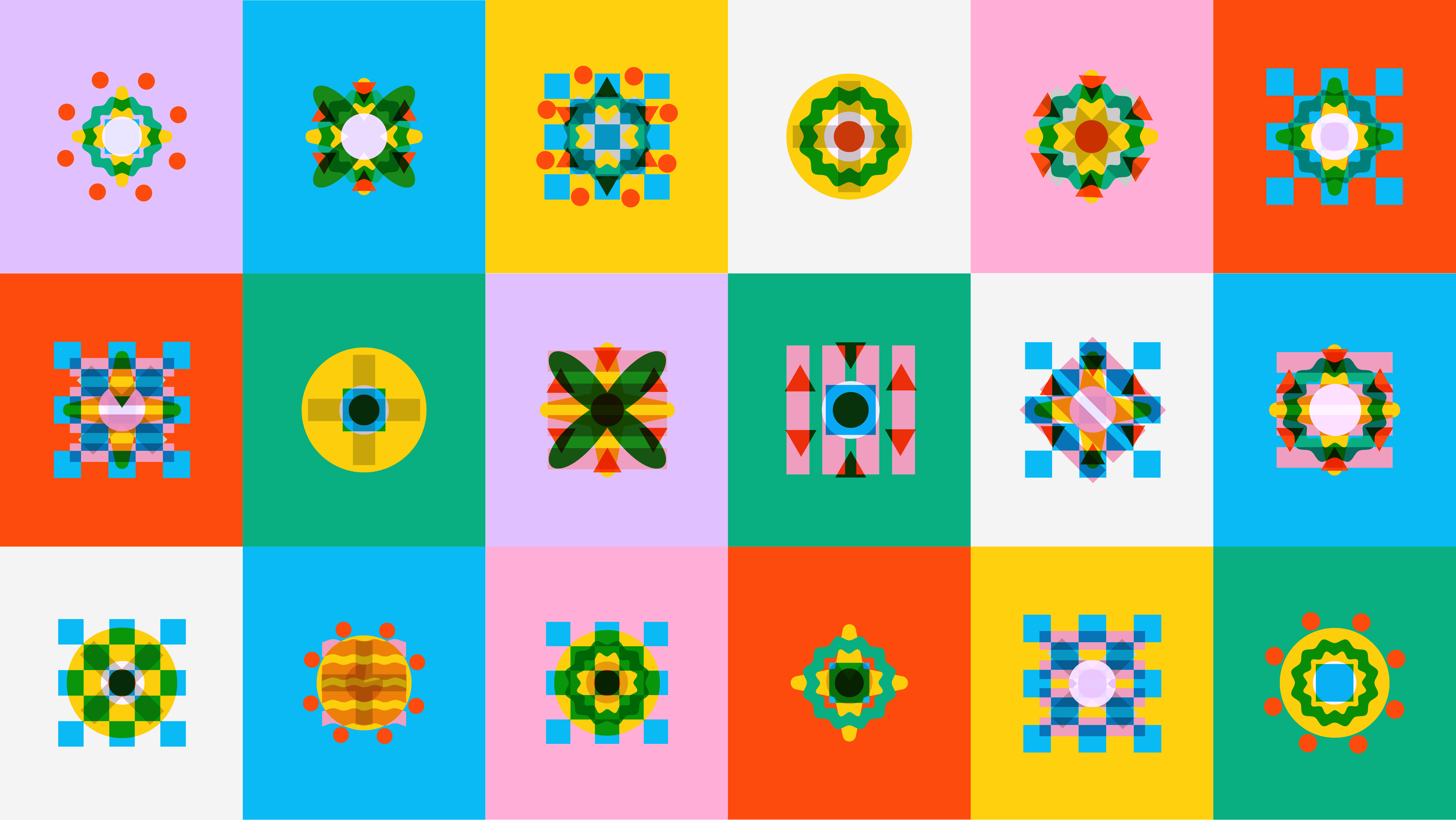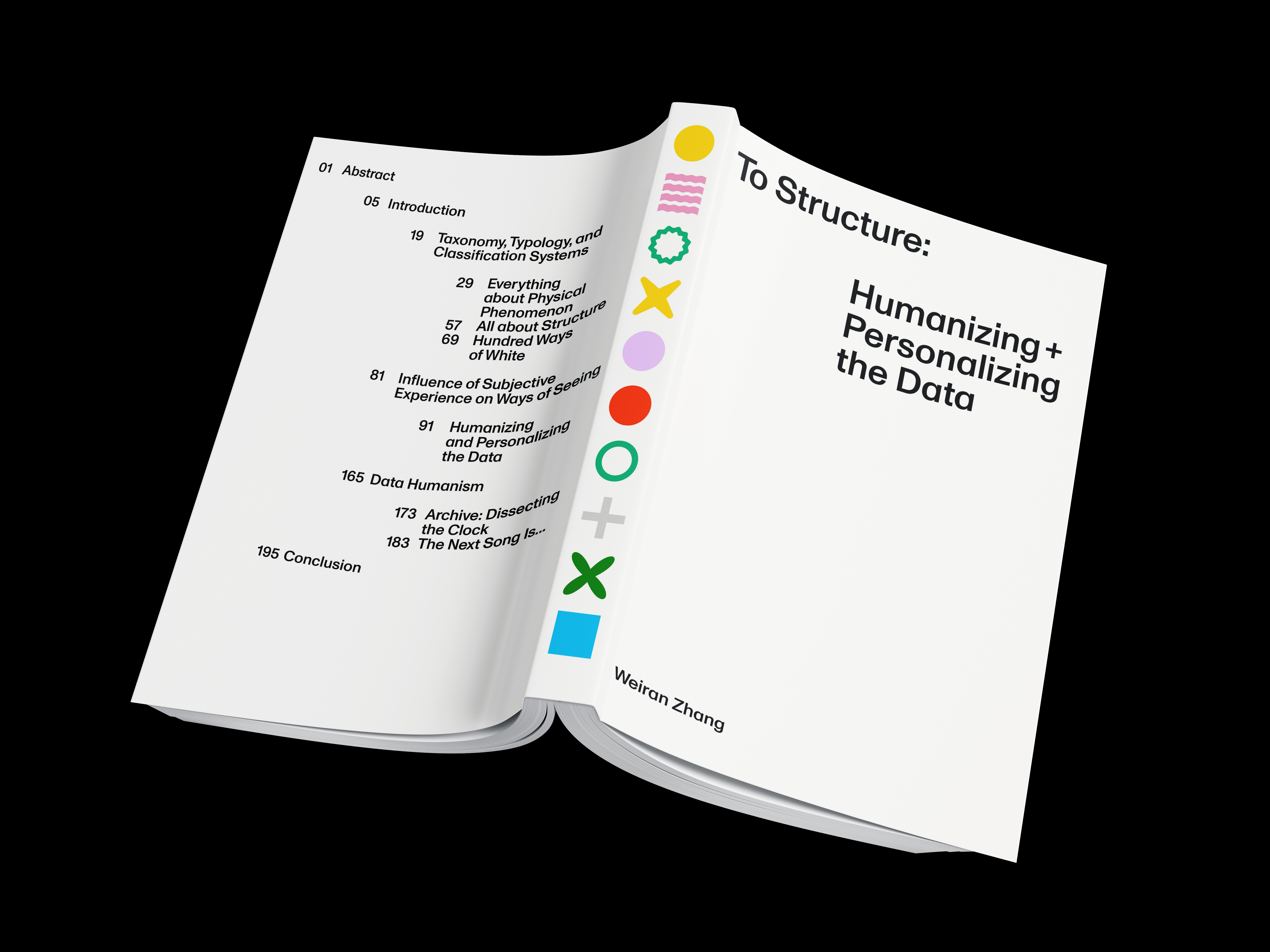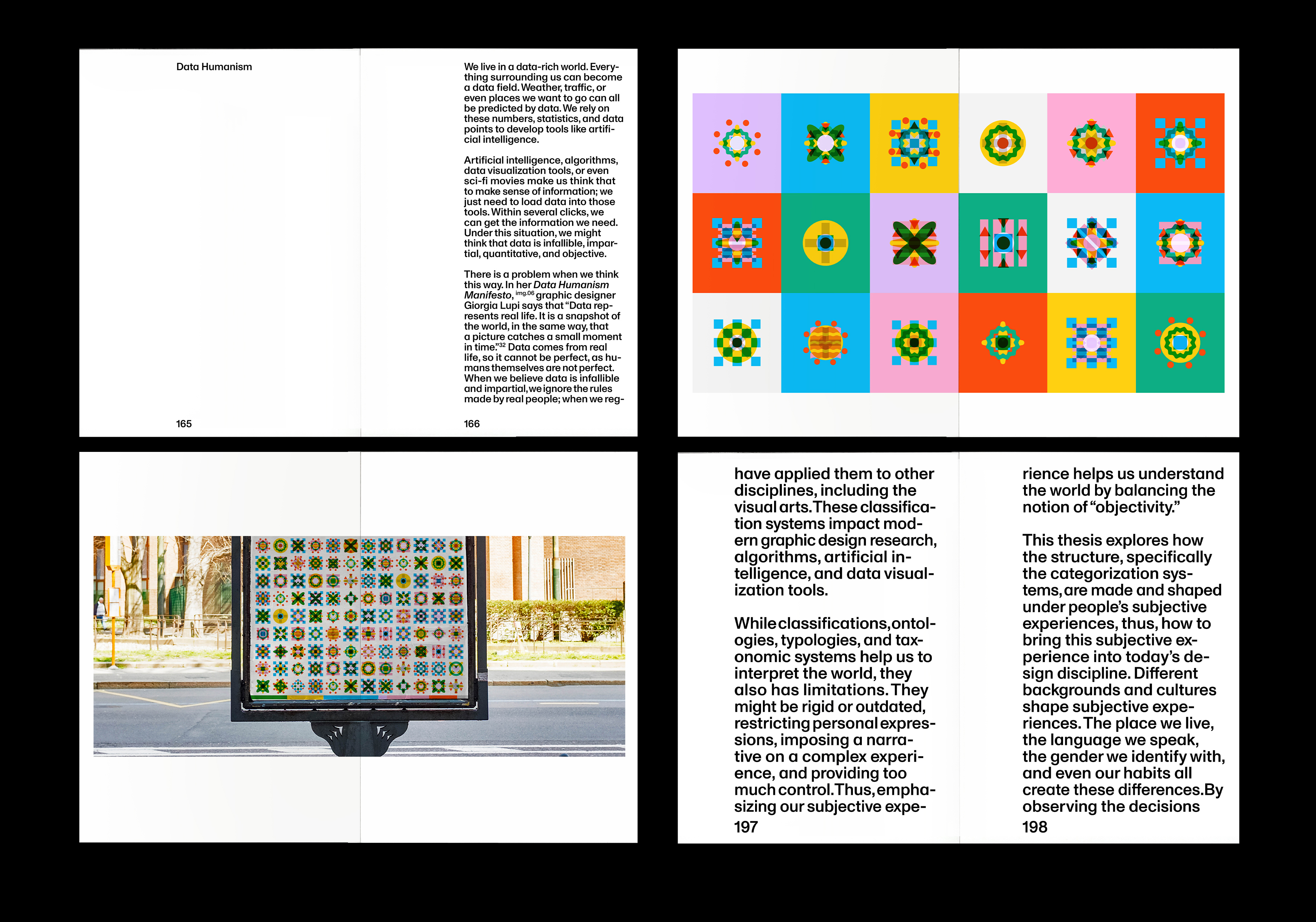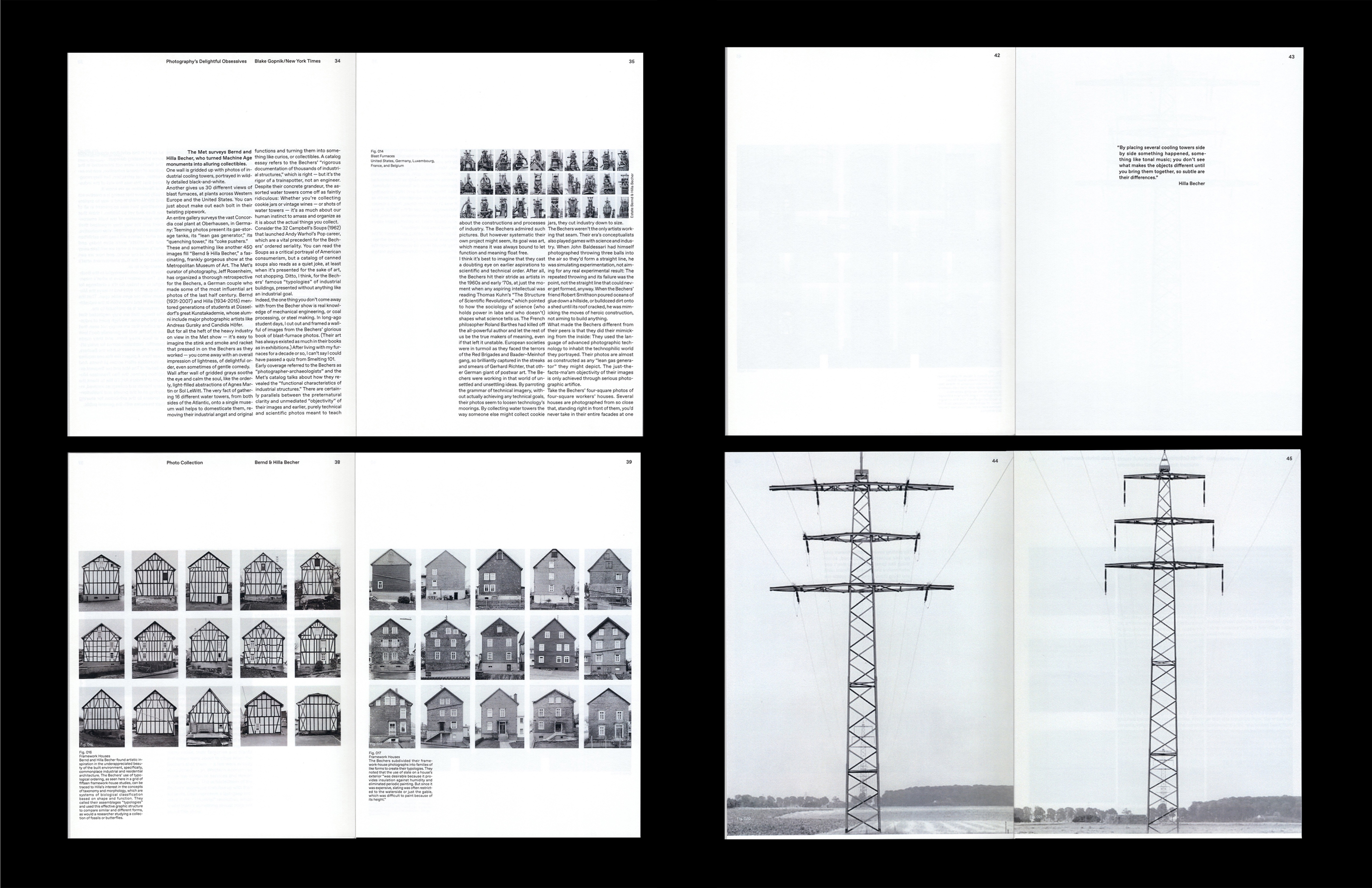To Structure: Humanizing and Personalizing the Data
Weiran Zhang
When we encounter abundant unfamiliar data and information, our initial impulse is often to find a structure: to organize, order, categorize, and classify it. Organizing, classifying, and pattern recognition are fundamental methods to interpret and make sense of the world around us. These methods are at the foundation of other ways of learning, essential tools for giving logic to spontaneous experiences. They are also fundamental processes in graphic design. While a classification system like a taxonomy or typology can help us make sense of disordered data, imposing a structure on a data set can render other interpretations or “ways of seeing.” This thesis seeks to understand how our backgrounds and subjective experiences influence our innate methodologies for pattern recognition, categorizing, or interpreting data, especially personalized data that reflects, captures, or documents a subjective experience. How can designers be inspired by “personalized” data, and what new meaningful narratives can this data bring to us?

Posters of Monograms
A series of posters had created to present the monograms, the prompts, and the original shapes that generated the monograms.
Monograms
The monogram game is created to explore the multiplicity and plurality between each individual. The audience could get their monograms by answering five questions and playing with the stickers that contain shapes. At the same time, the colorfulness and playfulness of it also inject fun and interactivity.
Thesis Book

Spreads from Thesis Book

Spreads from Thesis Book (cont.)

Spreads from Thesis Book (cont.)

The Guidebook to Create the Monograms

All About Structure (Research & Publication Design)
Where does structure come from? The world is spontaneous and random; structures are only a little part of the consistency we anchor in chaos. This book uses the “ruler,” this everyday object, as the starting point. The ruler has the characteristics of measuring, standard making, structuring, ordering, and creating balance. It collects multiple examples from culture, art, architecture, and history to discover and interpret the “structure” in the creation of meaning.
All About Structure (cont.)
